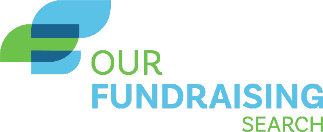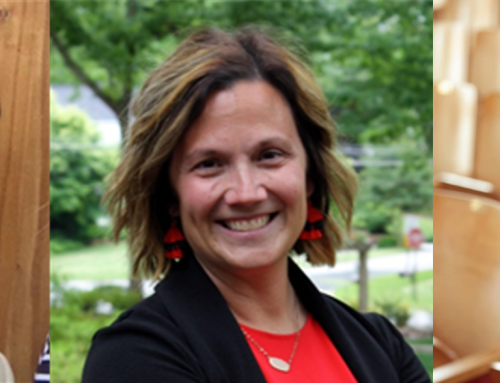Coming out of the pandemic is a little bit like coming out of coma: you are confused, groggy, and not sure what has changed. In mid 2021, we set about trying to determine what changed while we were quarantined and how our clients and colleagues could leverage that. In this article, we will give you some insights into what we’ve learned about the current state of philanthropy and some recommendations we think will help your school jump ahead of others.
The View From Here
We stayed in touch with as many of our clients, colleagues and funders as we could during the pandemic and began surveying them in earnest this past summer. We’re pleased to say that the vast number of our constituent organizations survived the pandemic, although no one escaped it unscathed. The shifts in the philanthropic landscape were sizeable. Let’s start with what we learned from Giving USA’s annual report for 2020. In 2020, giving was up by 5% over 2019. Once again, individual donors provided the highest amount of philanthropic revenue for nonprofits, accounting for more than 68% of the $471 billion given to nonprofits in that year.
While not all sectors benefitted equally in 2020, giving to education increased by over 11%. Sky-rocketing enrollment combined with donor loyalty to their children’s success proved a winning combination during an otherwise difficult year for many in the nonprofit world.
At Our Fundraising Search, we conducted a survey of all of our client organizations across the country. Independent schools account for a significant portion of our client base, and we were pleased with the response rate to the survey. A third of our respondents came from the sector.
In the survey, we really wanted to focus on how funding changed both for nonprofits as a whole, and for the individual sectors we serve. We also wanted to learn how organizations adapted to those changes, both strategically and structurally.
We found a number of clear trends across nonprofits in general. With regard to independent schools, what we found is that these trends were exaggerated, both positively and negatively, compared to other sectors. Specifically, we saw the following.
Schools’ annual fundraising remained flat at a higher rate than the nonprofit sector as a whole.
For schools, 21% had flat annual fundraising compared to only 12% of nonprofits overall. Positively, 50% of schools saw an increase of some kind which compares favorably to the 47% all other nonprofits experienced.
Schools saw more drastic swings in their fundraising mix, both positive and negative, than the nonprofit sector as a whole.
Schools saw a 66% increase in individual giving, compared to 47% of nonprofits overall. Conversely, schools benefitted from an increase in foundation giving at a decreased rate than nonprofits overall with 28% increasing and 57% remaining flat, compared to 47% increase and 13% remaining flat across all nonprofits. Trends in corporate and government funding were towards increases in all sectors, the latter mostly due to emergency grants and PPP loans.
Eighty-four percent of nonprofits reported corporate funding staying flat or declining, which compares equally with schools. We believe this is a trend that will affect all organizations for the next several years. We’ll say more about this later.
Schools in a capital campaign going into the pandemic were both more aggressive about carrying on or suspending their campaign at a higher rate than other sectors. Moreover, schools are moving forward with campaigns (existing and new) similarly to other sectors.
Most schools we surveyed were not in a campaign (65%). However, we found two unique trends among those that were. At a higher rate than other sectors, schools were more likely to either move forward with their campaigns (24% versus 12%) or suspend the campaign until a later date (9% vs 0%). The 0% reported of other nonprofit sectors suspending their campaigns is answered when you consider that 12% cancelled their campaigns almost immediately, versus 0% of schools reported cancelling their campaign going into the pandemic. While the comprehensive survey results show that 65% of nonprofits exited the pandemic with plans to start or continue a campaign, a slightly higher 72% of schools surveyed are now planning or continuing a campaign.
Schools revealed a higher rate of stability in staffing.
The survey revealed what many of us already knew about fundraising staffing in schools. Even in a pandemic, staffing remained largely stable or experienced increases across the board: fundraising leadership (90% vs. 80% other sectors), other fundraisers (92% vs. 76%), fundraising support staff (84% vs. 67%) and event staff (77% vs. 58%). Conversely, while other sectors saw a higher rate of decreased staffing, those reporting did not experience a single restructuring across any position compared to slight increases for schools. This could be related to changes in capital campaigns going into the pandemic as well a lack of events for those staff mostly events related.
The Funders’ Perspectives
Because institutional funders, philanthropic foundations in particular, act as a bellwether for how funding will change in different economies and political environments, we also surveyed the major foundations that we have worked with in the past and with which we have close relationships. We asked the executive directors and/or heads of philanthropy for each of those organizations three questions.
- How has the pandemic affected their giving?
- Will they go back to their original giving patterns?
- How do they want us to communicate with them going forward?
The responses themselves were not surprising as much as the consistency of the answers across the survey set. Overwhelmingly, the foundations said they had paused their own campaigns and special projects or focus areas to shift funding to emergency grants and annual support. Food scarcity, shelter and healthcare took precedent over their normal giving priorities.
While they are now starting the shift back to their formal priorities, none of them would characterize that as a return to “business as usual.” Because 2020 highlighted so much civil, racial and economic inequality in American society, all of them are placing greater emphasis on equity in their funding. Applicants can expect questions about what they are doing to further access and foster racial justice in their programming. Additionally, they are placing a greater emphasis on education particularly as it relates to addressing learning deficits created by quarantine.
Foundations, like all other institutions, are returning to offices and in-person meetings in some form but are also embracing the advantages to virtual meetings and online systems to streamline and improve communications with nonprofits. Many foundations made the transition to online applications and electronic submissions even after years of holding on to requiring printed submissions to be mailed.
Lastly, when speaking to foundation arms of a few Fortune 500 corporations, they have all adjusted their giving pools based on the financial performance of their for-profit parents. Most are not shifting their giving priorities and none of the ones we spoke with are looking for new organizations to fund. Much of that is driven by the nature of multi-year sponsorship commitments of corporate philanthropy. Corporations contractually have to honor those commitments, and so will therefore prioritize those agreements over new applicants.
Recommendations for Schools’ Post Pandemic Fundraising Plans
Often, when we present to clients or associations we go in with a list. e.g., “Three questions to ask your funder” or “Five things to improve your strategic plan.” With that in mind, here are eight recommendations for how to use the above information to improve your fundraising in the coming two-to-three years.
-
Evaluate how you compare with other institutions.
Based on the previous information, you should be asking your finance and development staff to compare and contrast your organization’s own results. Did your fundraising improve compared to the standard? Did you do better than the sector? If so, brag about it to your board of directors. They need to know.
If you did the same or worse than the education sector, you need to analyze why. Determine what the key drivers were of your performance, whether it is good or bad. If you under-performed the sector, it’s critical that you take action to both understand and address the reasons.
-
Evaluate your donor mix.
Beyond your overall results, you need to understand what happened to giving levels by donor segment, and sometimes by individual donor. How did each sector do and what were the key drivers in that sector? Understanding that will enable you to set realistic goals for the coming year.
-
Exercise caution in goal setting.
In a forthcoming book, we spend a good bit of time discussing how an organization can inadvertently set unrealistic fundraising goals, especially at a time like this. Increasing fundraising is more complex than you might expect. Let’s assume your objective is to increase the annual fund by 10 percent in the coming year over the previous year.
If you raised $250,000 last year, the increase would be
10% x $250,000 or $25,000.
The new goal would be $250,000 plus $25,000 for a total of $275,000.
However, if there was a one-time gift last year of $25,000 that will not be repeated, and if you normally have 1 percent gift attrition ($2,500), your starting point would be $222,500. You would actually need $52,500 in new gifts, not $25,000 to reach your new goal of $275,000 for the year.
In reality, you need a 21 percent increase in annual fund gifts to reach that ten percent improvement goal. Is a 21 percent increase in one year attainable?
-
Don’t count on corporate support.
Regardless of what your board of directors may say about “Company X has billions to give away,” the data does not support it. Corporate giving, which is usually the smallest source of philanthropic revenue declined by 6% in 2020. As we come out of the pandemic to supply chain issues and staffing shortages, we expect increased volatility in the corporate arena which will further constrain their giving. You have limited fundraising workforce and this is not going to be your best source of return on investment.
-
Seek foundation funding.
Even if foundations have not been a key part of your funding mix in the past, now is the time to explore those options. Foundation funding was up 17% in 2020, and foundations see themselves as an important part of the recovery.
-
Focus on individual support.
Individual donors are always the backbone of philanthropy, and pandemic and resulting economic fallout impacted major donors less than average donors. Many even saw their finances improve during 2020. Never underestimate the sense of obligation that these donors might feel to do more in their communities at a time like this.
-
Get back to the basics of fundraising: meet in person and be sure to make an ask.
The in-person meeting is the strongest form of relationship building activity between your school and its donors. Like you, they have been cooped up for a year or more. If you don’t get to them first, some other fundraiser will.
-
Get campaigns back on track before the masses.
Our research shows that schools in particular were better about sustaining the momentum of their campaigns. Build upon that momentum now before other sectors can catch up. And, if you are considering a campaign, accelerate your plans.
Some parting thoughts…
There are a few things that distinguish really successful organizations in general, and really successful fundraisers in particular.
- The ability to leverage data to set and adjust strategy;
- The ability to create healthy relationships that are characterized by mutual respect, trust and a sense of obligation; and,
- The ability to see opportunities where others see obstacles.
There is no doubt in anyone’s minds that the pandemic created a substantial number of barriers and obstacles for all nonprofits and their fundraising programs. We believe that schools have more opportunities right now to move faster in restoring their fundraising models, and doing so ahead of other sectors. At Our Fundraising Search, we have the luxury of working with clients who we believe are best positioned for success. We’re betting on schools.






Leave A Comment